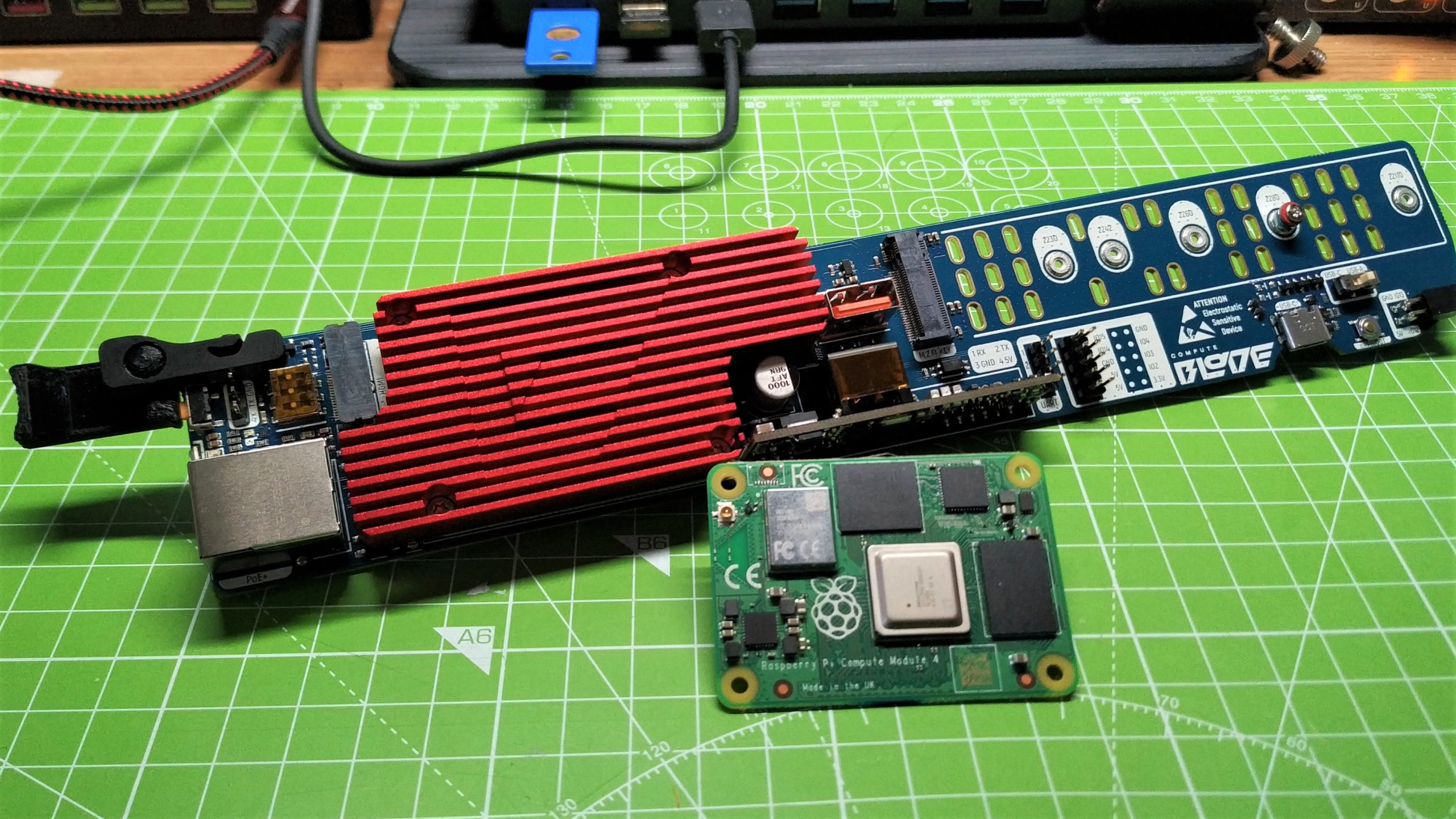
Raspberry Pi Powered Compute Blade Makes the Cut
We’ve been tracking this project since mid 2021, and the time has been well spent. Ivan Kuleshov’s Compute Blade is a thin PCB that packs a plethora of storage options for your Raspberry Pi Compute Module 4 (or compatible). Kuleshov’s kickstarter has smashed its $522,209 funding goal, reaching $673,365 at the time of writing.
The Compute Blade is a rack-mountable carrier board for the Raspberry Pi Compute Module 4, designed for high-density clusters. The PCB is packed with features, but your eye will be drawn to the red anodized aluminum heatsink which fits over the Compute Module 4 (or compatible), providing a passive means to keep the Pi cool. This could prove useful, should you wish to overclock.
| Row 0 – Cell 0 | Uptime Compute Blade Basic | Uptime Compute Blade TPM | Uptime Compute Blade Dev |
| Raspberry Pi CM4 Connector | Yes | Yes | Yes |
| M.2 (M Key up to 22110 NVMe drives) | Yes | Yes | Yes |
| Gigabit Ethernet with PoE | Yes | Yes | Yes |
| UART | Yes | Yes | Yes |
| Compute Blade Headers | Yes | Yes | Yes |
| Stealth Mode | Yes | Yes | Yes |
| LEDs | Yes | Yes | Yes |
| USB-A port | No | Yes | Yes |
| TPM | No | Yes | Yes |
| HDMI | No | No | Yes |
| USB-C (Bootloader update) | No | No | Yes |
| Micro SD card slot | No | No | Yes |
| Wi-Fi, BT, nRPIBOOT | Locked | Locked | Switchable |
The PCB measures 27 x 4 x 1.6 cm, and Kuleshov has optimized the board for many different features. Going from the Ethernet port on the left, we have Gigabit Ethernet supporting Power over Ethernet (PoE), on our dev unit there is an HDMI port. We then reach the anodized heatsink, secured using T7 hex screws. After that. there is a USB-A port, followed by an expansive M.2 slot. This slot supports NVMe drives from 2230 to 22110, or it can be used with other modules such as Google’s Coral TPU.
If you need access to the GPIO, you have some GPIO pins at your disposal. We don’t get the full 40 pins, which means we can’t attach HATs, but we do have access to a small number of GPIO pins. If we need to connect sensors, then the I2C pins are exposed and can be used with components supporting the communication protocol, including Stemma QT components.
The Compute Blade’s strength comes in numbers, more specifically “clusters”. Given the small size and blade design of the units, they will easily slide into a blade server and as long as you’ve got plenty of Raspberry Pi’s, you’ll have a powerful Arm computing cluster.
With prices starting from $65 for a Compute Blade Basic, the version we have on the bench is the $107 Dev version, which has all the bells and whistles. If you like what you see, then head over to the kickstarter page to make your pledge. We’ll be chatting live with Kuleshov on February 14 at 2pm ET / 7pm GMT on our weekly Raspberry Pi show, The Pi Cast.
Remember that crowdfunding a project is not a guarantee of receiving a finished product. Backing a crowdfunded project is akin to an investment; you believe in the project and want it to succeed. You are not purchasing a retail product.



